Put Your Wetsuit On Right (It’s a Big Deal)
As promised last week, here’s a primer on how to put your wetsuit on. I’ve written on this before and I do so now, because this is one big reason why people have trouble swimming in wetsuits.
This is also a reason why people have trouble thinking their fullsuits are really the best wetsuits for them. There is a huge difference between how the same wetsuit swims, with it put on as I recommend, versus how a lot of folks put on their fullsuits.
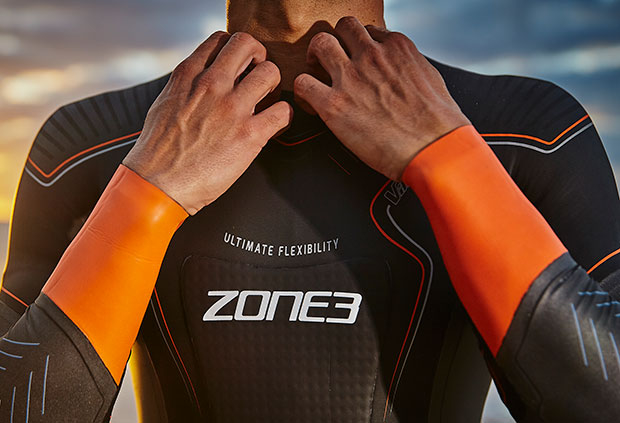
There’s a video further down that I made 3 years ago, and I see no reason to make it again as it gets the point across pretty succinctly, and in 2 minutes. It’s a video of me in a ROKA Maverick but what I’m writing here refers to any wetsuit, whether 1pc or 2pc.
First, cut your fingernails short. If you have nails, they may make little cuts on the suit. If you don’t cut your nails your nails may penetrate the rubber. Some of you have asked about the SCS coatings in the operative thread on wetsuits on our Reader Forum. While that coating does probably add some speed to the wetsuit (but honestly I don’t know how much), its best feature is that it’s a kind of body armor for the wetsuit. Fingernail tears in Yamamoto #39 rubber went from big problem to almost no problem once the SCS coating was developed and deployed. Still, you can cut these suits with your fingernails, so, decide whether you want fingernails or a wetsuit: it’s hard to have both.
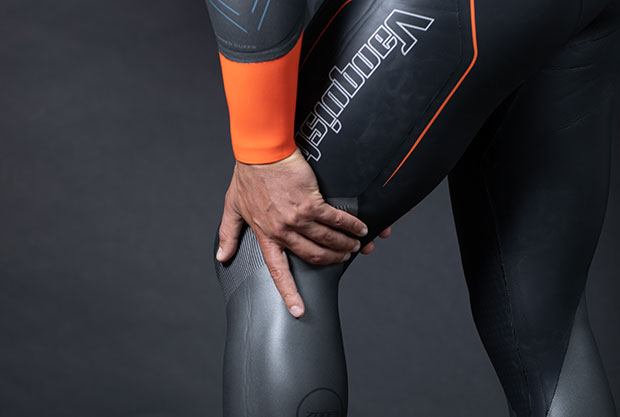
Second, yes, you race sockless. Fine. But take a pair of socks to transition just for putting on your wetsuit. Either that or take a plastic baggie and put your foot in it; stick your baggied foot into the wetsuit. In my wetsuit factory we had to repair a lot of blown out calves in wetsuits because of this. Basically, your wetsuit’s lower leg is in labor and your foot (and heel) is the child. Birthing your foot can be as hard or as easy on your wetsuit as you make it.
Next, pull the wetsuit up to your knees. All the way up. High. Then, pull your wetsuit up to your waist, high up into your crotch, until you sing an octave higher. If you complain of a lack of shoulder mobility, this step right here is where you lost that shoulder mobility in your shoulders. In a 1-piece wetsuit (which is what you own if you don’t own a De Soto), the big limiter in shoulder mobility is the drag on your shoulders with a wetsuit “torso” that is too short for your body.
For this reason, of course, you need to buy the right size and model wetsuit, but the way you know you’ve got a problem here is if you feel a drag on your shoulders (just standing in your wetsuit), and if you feel like the neck is choking you. But you might feel this even with the correct size wetsuit, if you don’t have the crotch of the wetsuit pulled up tight into your crotch. It’s really important to get the legs of the wetsuit all the way up, way up, as high as you can get them, before you put the top of the wetsuit on.
See what’s going on here? You’re putting your wetsuit on in sections. Lower leg, then the waist, then the arms. If you’re pulling on the rubber in your thighs while your wetsuit is all the way on then you didn’t put the suit on right to begin with. That rubber in your thighs should’ve been all the way up before you put the top half of your suit on.
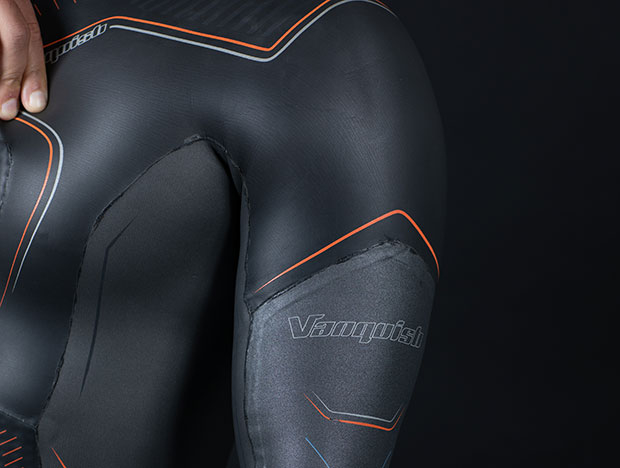
Now put one arm through. Get one arm all the way on. Pull the rubber all the way up. Hike it over one shoulder and then do the other. Make sure the seams in the arms line up. Make sure the panels on the wrists are in the right spot before you put the wetsuit on. You may also choose to put that sock or plastic baggie over your hand, to keep your hand from busting through the arm of the wetsuit.
Just as you must make sure the wetsuit is all the way up tight into your crotch, the arm must be pulled up so that the suit is tight into your armpit (as in the pic above).
When you zip it, one hand pulls the zipper base down, the other pulls the zipper up. When you attach the Velcro in back, make sure it’s lined up well. A lot of “wetsuit hickies” happen because the Velcro folds back on itself, and the “hook” part of the hook & loop rubs against your neck. Know where the pull cord is so that when you get out of the water you can easily find it.
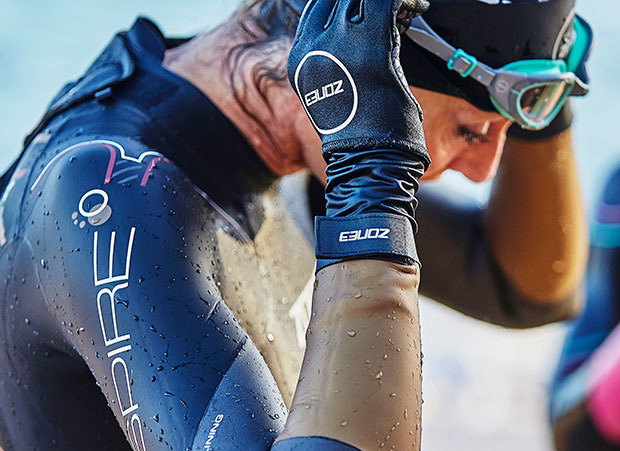
Make sure the suit is pulled up in the back enough so that the neck isn’t pressing against your throat. But, if the suit is too big, or borderline big, you might have the opposite problem. You don’t want a space – a scoop – between the front of the wetsuit’s neck and your throat. If that’s the case, pull the back of the wetsuit down a little. You want no scoop in front, but you want the least pressure on your neck as possible.
Now you’re ready to swim.


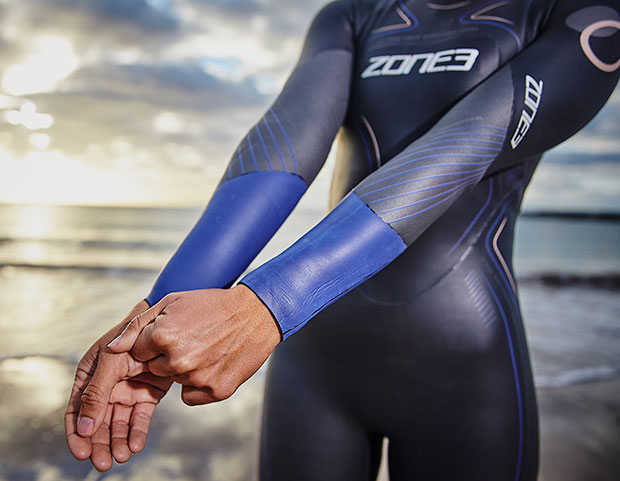
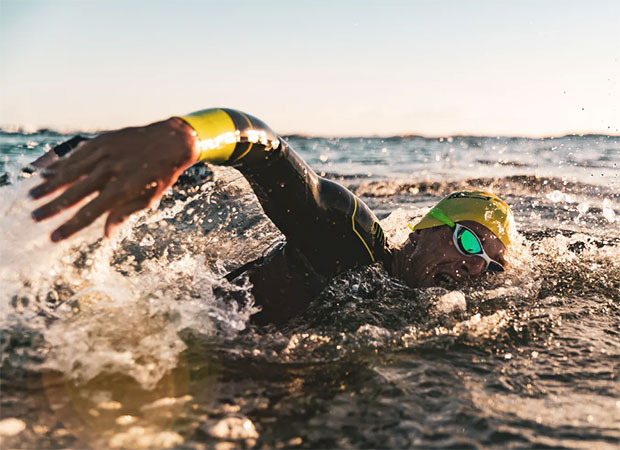
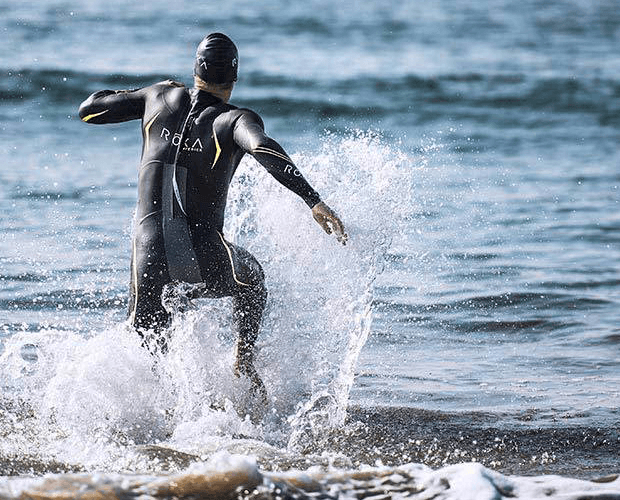
Start the discussion at forum.slowtwitch.com